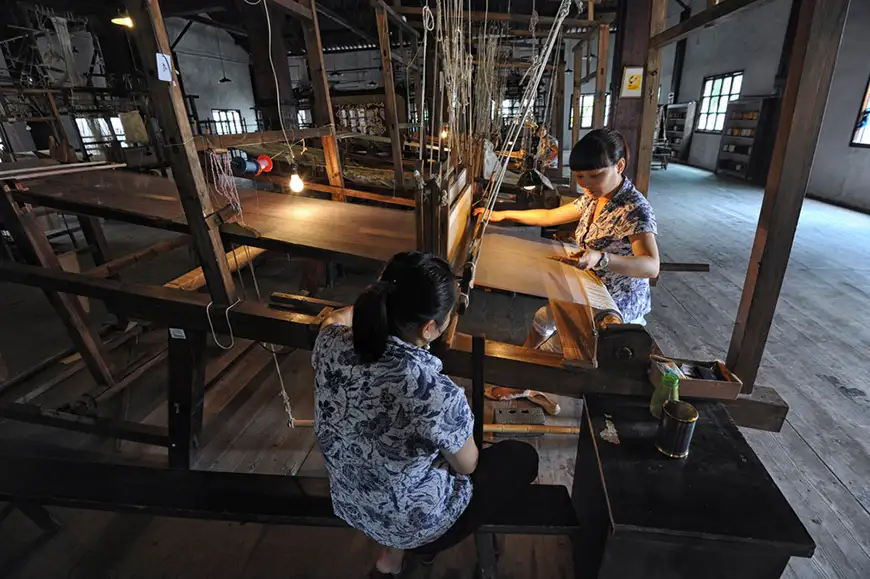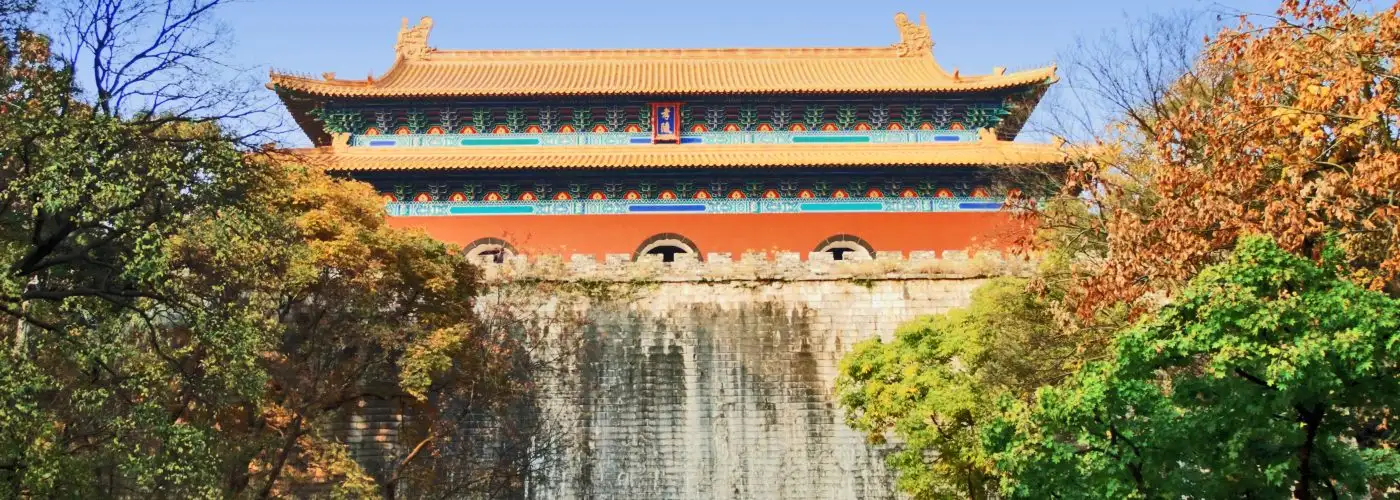While China has roughly four times the population of the U.S., it’s about the same size as the United States in square miles. This fact might be the best illustration of why saying you’re “visiting China” doesn’t mean very much. Are you headed to the south’s lush coastlines, the west’s snowcapped mountain peaks, or the north’s rambling Great Wall?
In a country so big and rich in history and culture, it can also be hard to decide where to begin. One helpful approach is to start with its biggest city and air traffic hub, Shanghai, and the adjacent province of Jiangsu, China.
From ancient city walls to the country’s first craft brewery, Jiangsu, China, is a must-visit region that encapsulates classical Chinese art forms and culture in its links to the Ming and Qing dynasties. And while it’s easy to let massive Shanghai, the former Chinese capital of Nanjing, or Suzhou—“the Venice of China”—dominate your trip, each city is worth a visit in its own right.
Here are a few reasons to let a flight through Shanghai take you (via a fast and easy bullet train) to some of the best places in the province of Jiangsu, China.
Top Must-See Places in Shanghai

You surely know of Shanghai, the largest of China’s megacities—but you might not know where to begin when you get there. Ask any expert what you need to do in Shanghai, though, and the list will almost certainly include two places that encapsulate both the cultural past and high-tech present/future of China: Tianzifang and the Bund.
Tianzifang Market: An arts and crafts market home to plenty of food stalls, Tianzifang is located steps from Shanghai’s modern designer-shopping district, the French Concession. Tianzifang is the perfect place to get handmade goods ranging from traditional fans and silk items to leather goods and souvenir items; it also has food options like noodle shops, cafes, and vendors serving everything from meat skewers to animal-shaped dessert dumplings. It’s a tourist spot for sure, but some of the locals also enjoy the design shops and cafes.
The Bund: Meaning “embankment,” the Bund is an observation area that sits on the Huangpu River’s British-colonial side, looking across to the neon-lit skyscrapers that have become a symbol of Shanghai. Oriental Pearl TV Tower is perhaps the most famous and mesmerizing for its changing colored lights and location at the tip of the modern Pudong New Area.
Visit the Bund at night to experience the lights and also during the day to seek out a hidden gem during business hours: The Shanghai Pudong Development Bank Building. The bank is the former colonial Shanghai Government Building, built in a classical Greek style with Italian marble. Its grandiose pillars and mosaics make for a historic and whimsical lobby that makes you feel like you’ve stepped into Gringotts Bank from the Harry Potter series.
Top Must-See Places in Nanjing

The capital of the Ming and Qing dynasties, Nanjing is a college city home to as much youth, culture, and personality as it is history—think ancient landmarks alongside China’s first craft brewery. It’s home to eight million people and 60 universities, and was the former capital of both China and the Ming and Qing dynasties.
Purple Mountain: Ming tombs, which are a tourism draw mainly in Beijing, have a major presence here in the form of the first Ming dynasty tomb, Ming Xiaoling Mausoleum. The massive tomb of the founder of the Ming dynasty is hidden in the foothills of Purple Mountain, which is named for its seasonal plum blossoms and also houses the (much smaller) tomb of China’s first president. Built in the 1300s CE, Ming Xiaoling Mausoleum is only accessible via long pathways lined by life-sized sculptures of exotic silk road work animals, from elephants to camels. The royal gardens leading to the Hongwu Emperors’ final resting place are almost as enchanting as the awe-inspiring final event: a massive adorned tomb painted red and yellow, protected by massive gates and the Purple Mountain’s lush forest.
Master Gao Brewing: A little-known fact about Nanjing is that it’s home to China’s first craft brewery: Master Gao Brewing, which is a can’t-miss spot if you’re visiting Jiangsu, China. Pioneered by New England-educated brewer Gao Yan in 2008, Master Gao Brewing is a slice of IPA heaven in this college city. The brewery has three locations in Nanjing, ranging from a beer garden to a restaurant to a large brewpub. Head to any of them for a sampling of jasmine and green-tea infused lagers and IPAs. There are 24 varieties in all, and only one is sold the world over in the United States: Jasmine Baby Tea Lager. Visiting any of the locations means you’ll get to try a lot more, from experimental sour ales to dark porters and stouts.
Ming City Wall: Nanjing’s city wall is the largest remaining intact city wall of its age in the world; like the Great Wall, it was also built in the 1300s. But it’s much more than just a wall: at 46 feet thick and 13 miles long, it’s also home to cultural sites like Lao Cui Tea House’s tea ceremonies and fan-painting workshops. At the wall’s Gate of China, you can explore the top of the wall on foot and take part in the cultural activities that define the area this wall protected for seven centuries.
Top Must-See Places in Suzhou

Even larger than Nanjing, Suzhou is a city of 13 million that’s been heralded for centuries as the cultural center of the Ming and Qing dynasties, and a vacation spot for China’s elite. It’s often referred to as a “Paris” or “Venice” of Asia thanks to its rich Golden Age history and still functioning ancient canals—a unique place to take to a gondola for a historic cruise. And beyond the historic canal districts of Pingjiang Road and Shantang Street (lined with both modern shops, galleries, and cafes, as well as historic eateries, classical Kun opera venues, and tea houses), there’s still much to uncover about the unexpectedly massive “Venice” at the heart of Jiangsu, China

Suzhou No. 1 Silk Mill: Suzhou’s second biggest claim to fame is its status as the largest silk-producing city in China—and therefore the world. Suzhou’s No. 1 Silk Mill is free to visitors who want to witness the silk-making process from silk worm farming to production and embroidery. It has an economical showroom of goods ranging from scarves to bathrobes to bedding (all 100-percent silk). For even more insight into the area’s silk production and trade, Suzhou’s Embroidery Research Institute is a mesmerizing local institution where visitors can see ethereal silk art designs, typically of natural scenery or wildlife, that are created by hand over many months (sometimes years) of precise fine-needle work.
The Leaning Tower of China, Tiger Hill: Gardens like the Humble Administrator’s Garden and Lion Grove Garden are a cornerstone of Suzhou’s cultural status—and have been collectively dubbed as a UNESCO World Heritage Site accordingly. But in a more coincidental facet of its “Venice of China” moniker, Suzhou is also home to the Leaning Tower of China, also known as Tiger Hill’s Yunyan Pagoda, which began leaning during the Qing dynasty thanks to softening soil underneath its foundation. The Tiger Hill Pagoda is only one part of can’t-miss Tiger Hill, which also holds a bonsai garden, tea plantation, and many unique classical gardens and koi ponds—all part of the scenery on your long but easy trek up to Tiger Hill’s leaning-pagoda-topped peak.
S.I.P: A futuristic industrial district funded by Singapore, Suzhou Industrial Park, or S.I.P, proves that Suzhou isn’t just ancient canals. Its futuristic Suzhou Center Mall is one of the world’s largest shopping centers, and abuts massive skyscrapers that make this side of town—unlike the historic Old Town canal area, which prohibits skyscrapers—a bustling metropolis that draws visitors and locals alike for fountain shows every Friday on Jinji Lake, the largest inland lake in China. Visit the Suzhou Center mall if only to marvel at its awe-inspiring architecture (and wear your walking shoes to conquer its three-million-square-feet), and enjoy the large-scale water show sans crowds by heading to the W Suzhou’s 38th story balcony restaurant and bar.
Tongli: Suzhou’s oldest water town is also its best preserved slice of the Grand Canal, and it happens to be accessible by public transit despite feeling otherworldly. Tongli’s 1,000-year-old canals are a living example of ancient China’s use of the Grand Canal, which is the largest manmade canal in the world. Tongli is where you’ll want to take your hand-rowed gondola ride. Bring your best camera: The canals are adorned with red lanterns and pass beneath towering tree tunnels for once-in-a-lifetime photos and memories of China’s most underrated region.
More from SmarterTravel:
- What to Pack for China: 27 Unexpected Essentials
- 9 Essential Things to Know Before You Visit China
- 8 Secret Places in China Tourists Haven’t Discovered Yet
SmarterTravel Editor Shannon McMahon writes about all things travel. She visited Suzhou and Nanjing courtesy of Travel to Suzhou. Follow her on Instagram for more China travel insight @shanmcmahon.
We hand-pick everything we recommend and select items through testing and reviews. Some products are sent to us free of charge with no incentive to offer a favorable review. We offer our unbiased opinions and do not accept compensation to review products. All items are in stock and prices are accurate at the time of publication. If you buy something through our links, we may earn a commission.
Related
Top Fares From
Today's Top Travel Deals
Brought to you by ShermansTravel
Shop and Save with Country Inns...
Patricia Magaña
 Hotel & Lodging Deals
Hotel & Lodging Deals
$229 -- Chicago: Discounted Rates and...
Francesca Miele
 Hotel & Lodging Deals
$229+
Hotel & Lodging Deals
$229+
$188 -- Honolulu: Save on Oceanview...
Abigail Lamay
 Hotel & Lodging Deals
$188+
Hotel & Lodging Deals
$188+




